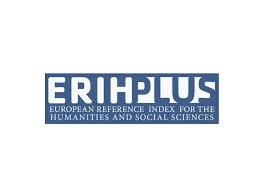Post-revolution oriental studies in the ussr: correspondence between v. V. Bartold and a. Y. Krymsky in the 1920s
Keywords:
Russia, Ukraine, East, Oriental studies, epistolary legacy, the Islamic world.Abstract
The primary reason for writing this article is a very special date – the 150th anniversary of the birth of
academician and Orientalist V. V. Bartold, an event celebrated in Russia in 2019. At the turn of the
twentieth century the scholar and humanist wrote: "Under the influence of the Golden East,
Wonderland works written by European orientalists, the East of One Thousand and One Nights
gradually retreats into the realm of legends; instead, the picture of the actual life of the Eastern
peoples unfolds before us, and we find out the reasons that determined the course of their history and
their role in the history of humankind.1 " Famous intellectuals and thinkers V. V. Bartold (1869-1930)
and A.Y. Krymsky (1871-1942) and their legacy vividly showcase the earthly fate, scientific
achievements and spiritual experience of the history of classical Oriental studies in Russia and
Europe.
The collections of the Institute of Manuscripts of the V.I. Vernadsky National Library of Ukraine hold
10 letters written by V.V. Bartold addressed to A.Y. Krymsky, while the St. Petersburg Archive of the
Russian Academy of Sciences keeps seven response letters from A.Y. Krymsky. Although the extant
correspondence covers a period of twenty years, from 1908 to 1928, this article will focus on the
significance of letters dating from the 1920s. The legacy of A.Y. Krymsky and V. V. Bartold has great
historical, scientific and cultural weight in the history of Russian, Ukrainian, and European Oriental
studies.
The article analyzes the unpublished correspondence between V.V. Bartold and A.Y. Krymsky
between 1922 and 1928. It contains valuable data which helps reconstruct the main trends of
contemporary academic life and improve understanding of existing problems in the field of Oriental
studies in Russia in the 1920s. The correspondence of these distinguished scholars showcases their
common professional interest in both the state of Oriental studies and the educational system.








